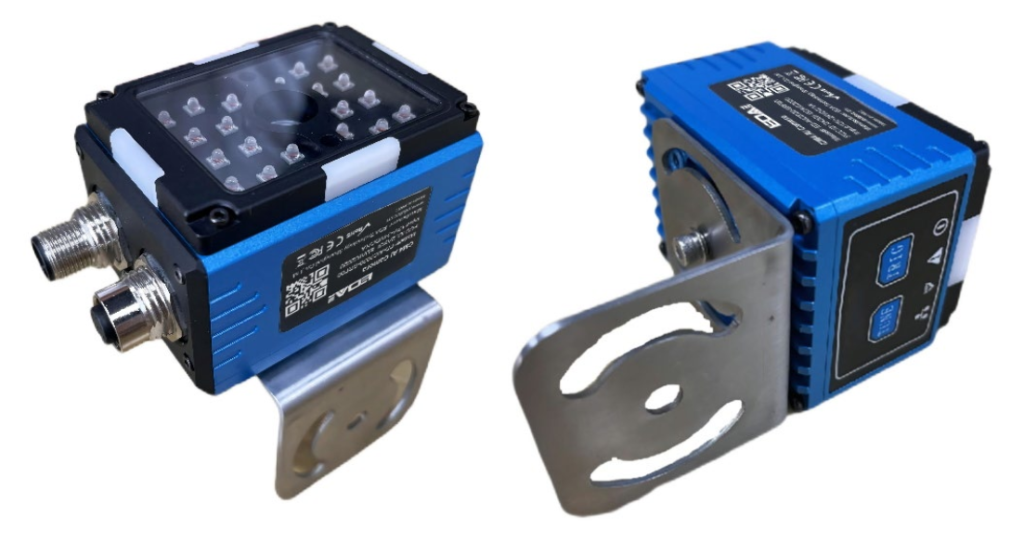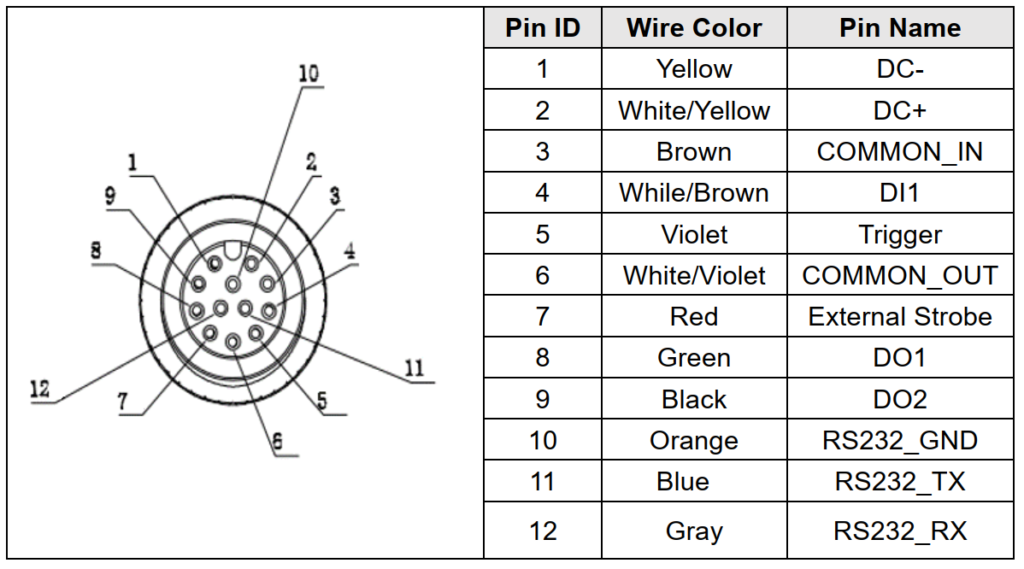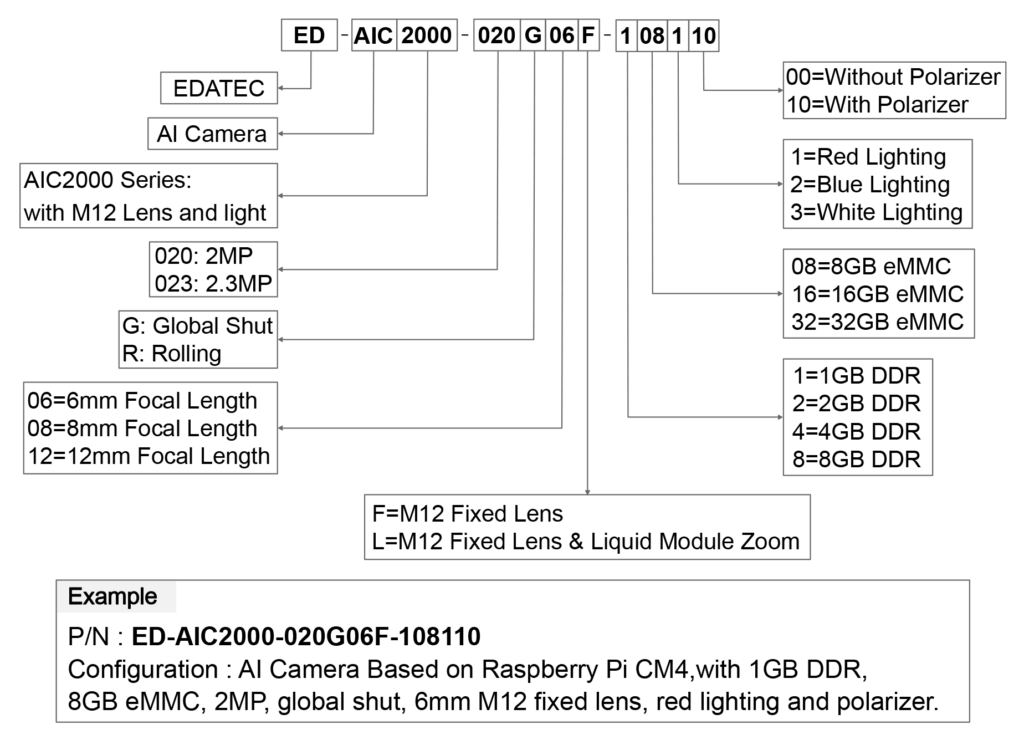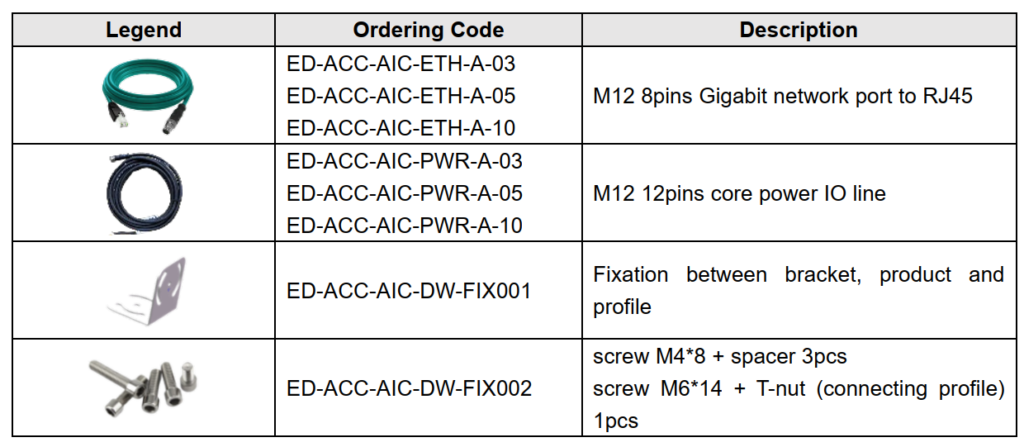EDATEC industrial AI Camera ED-AIC2020
What is it?
This is a rugged industrial camera with built-in LED illumination, and a Raspberry Pi Compute Module (CM4), which AI algorithms can be run on.

Advantages
Due to integration of key components, this AI camera reduces installation time and maintenance efforts. It provides an easy mounting interface, and is suited for a rugged industrial environment.
Furthermore, ED-AIC2020 has a zoom lens.

IP65 rating + operating environment
The ED-AIC AI Camera is rated IP65.
IP65-rated products are commonly used in various industrial settings where dust and water resistance are essential. These products can also be found in outdoor lighting solutions, sensor casings, and certain types of electronic equipment designed for outdoor or harsh environments.
- The “6” indicates that the enclosure provides complete protection against dust ingress; it’s “dust-tight.”
- The “5” indicates that the enclosure is protected against low-pressure water jets from any direction, making it somewhat water-resistant but not waterproof.
Operating temperature: 0 °C to 50 °C.
Environmental Humidity: 5% to 90% relative humidity, non-condensing.
Ai Vision applications
QT, Python, OpenCV SDK and some AI algorithm demo applications are preinstalled – this can accelerate the development and deployment of AI vision applications.
Note, this camera does not integrate any accelerator chip (like the Coral series). There is a new AI camera version with a USB C interface, where you could add a Coral USB accelerator.
It supports Tensorflow and YOLO V5/V8. It can support a wide range of 3rd party Machine Vision Libraries like Halcon and Aurora Vision.
Get in touch with us to discuss your model and framerate requirements.
Target applications / example usage
- Fixed industrial barcode scanner
- object location
- measurement
- OCR
- AI based object detection
- AI based object segmentation
- AI based defect detection
Interfaces
1 x 10/100/1000M Ethernet with M12 aviation Connector
1 x PWR/IO M12 aviation Connector with 4 isolated GPIOs and 1 x RS232

DI, DO Pinout
| # | Signal | CM4 Pinout |
| 1 | DI1 | GPIO 17 |
| 2 | DO1 | GPIO 22 |
| 3 | DO2 | GPIO 27 |
Light
The camera has four individual light sections which can be turned on and off using RS232 commands.

Power
The camera can be powered with 10 – 30 V, typically with 12 / 24 V. The power consumption is 10 – 36 W, typically 20 W.
FAQ
Does this EDATEC AI camera offer a WiFi functionality? Or can such a functionality be added?
No, there is no built-in WiFi functionality or antenna interface, due to the solid metal, water-resistant enclosure. (IP65)
Recently, EDATEC has updated an AI camera, this new product has a type C USB interface, which you could use to add a WiFi adapter.
Is it possible to connect a 24VDC light barrier? Or do the GPIOs use 5VDC?
DI (digital input) and DO (digital output) on AI cameras use optocoupler isolation and support 24V.
Is there a model (or in the near future) with PoE (power over Ethernet), or does the system consume too much power overall?
This AI camera does not have PoE support. If you need PoE, you can use an external PoE splitter.
When choosing such a system, consider: The maximum power draw of the motherboard is 15W, in addition to the light source board, the energy consumption of the light source board will be larger, so the maximum power should be 36W.
In order to support the device at peak power consumption, you would need to utilize IEEE 802.3bt (Type 3) PoE++.
Here’s a table that outlines the different PoE (Power over Ethernet) standards, their power draw capabilities, and the type of cabling they require:
| PoE Standard | Max Power at Source | Max Power at Device | Cable Requirement |
|---|---|---|---|
| IEEE 802.3af (PoE) | 15.4W | 12.95W | Cat5, Cat5e, Cat6, Cat6a, Cat7 |
| IEEE 802.3at (PoE+) | 30W | 25.5W | Cat5, Cat5e, Cat6, Cat6a, Cat7 |
| IEEE 802.3bt (Type 3) (4PPoE or PoE++) | 60W | 51W | Cat5e, Cat6, Cat6a, Cat7 |
| IEEE 802.3bt (Type 4) (4PPoE or PoE++) | 100W | 71W | Cat5e, Cat6, Cat6a, Cat7 |
| Proprietary PoE | Varies | Varies | Varies |
- Max Power at Source: This is the maximum power that the PoE source equipment (usually a switch or injector) can supply.
- Max Power at Device: This is the maximum power available at the powered device (PD) after accounting for power loss in the cable.
- Cable Requirement: This specifies the minimum category of Ethernet cable needed to support the standard. Higher categories are generally backward compatible.
Here are some references for further reading:
This product is characterized by a high degree of integration, small size, and flexible installation. If PoE would be supported, the physical volume would increase, and therefore there are currently no plans to do so.
However, depending on customer order volume, EDATEC can customize the cameras individually or create bespoke products for you. Consider that the case would need to be updated for this, which would require a significant volume to add PoE functionality.
An alternative would be to use a product like an integrated switch with compute functionality, which can run the AI model for several network IP cameras at once.
Get in touch with us, if you are interested in such a model.
Is it possible to get the camera system in RGB (color)?
EDATEC has plans to launch an AI camera with RGB sensor, and they expect samples early next year (2024). Currently there is no specific information about the upcoming RGB sensor.
The current camera models are monochromatic (grayscale) cameras.
Does it support an external IO trigger?
Yes, it supports an external IO trigger.
Does it have a screen connector?
No, it does not – for this reason you will need to set it up remotely, using a secondary PC.
How can I flash an image to the eMMC?
To flash an image to the eMMC you need to open the device case, and access the internal microUSB connector. Refer to the manual.
Is it possible to dim the LEDs? e.g. to reduce power consumption?
No, the brightness of the LEDs can’t be adjusted. However, you can turn off LEDs in the four light zones individually (see above).
Order codes

ED-AIC2020 = EDATEC AI Camera 2000 series (with M12 lens and light), with 2 MP (020).
ED-AIC2020-83206F00: as above – 8 GB RAM 32 GB eMMC 6 mm Focal Length M12 Fixed Lens Without Polarizer.
Various sensors are available (2MP global shutter, 5MP rolling shutter), options for fixed or liquid lenses.
Accessories

